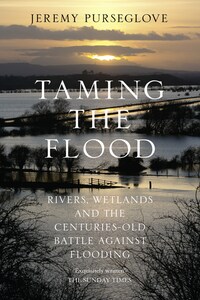William Collins
An imprint of HarperCollinsPublishers
1 London Bridge Street
London SE1 9GF
WilliamCollinsBooks.com
First published in the United Kingdom by Oxford University Press, 1988
This revised and updated second edition first published by William Collins in 2015
This eBook edition published by William Collins in 2017
Text © Jeremy Purseglove 1988, 2015, 2017
Cover photograph showing sunset over the flooded Somerset Levels, February 2014 © Matt Cardy/Getty Images
Jeremy Purseglove asserts the moral right to be identified as the author of this work.
A catalogue record for this book is available from the British Library.
All rights reserved under International and Pan-American Copyright Conventions. By payment of the required fees, you have been granted the non-exclusive, non-transferable right to access and read the text of this e-book on-screen. No part of this text may be reproduced, transmitted, down-loaded, decompiled, reverse engineered, or stored in or introduced into any information storage and retrieval system, in any form or by any means, whether electronic or mechanical, now known or hereinafter invented, without the express written permission of HarperCollins.
Source ISBN: 9780008132217
Ebook Edition © 2017 ISBN: 9780008132224
Version: 2017-03-08
‘Taming the Flood most deserves its status as a classic […] for its evocation of place […] the descriptions of wetlands are exquisitely written. This fine book calls for, and takes, a longer view.’
The Sunday Times
‘His original determination remains the driving force of this compelling book. Mr Purseglove’s mission was to show why rivers really matter to England and how our wetlands are a vital part of the natural scene. His descriptions are wonderfully accurate, his writing captivating and his enthusiasm catching. On any level, it’s a good read, but, as a call to action, it’s outstanding […] It is his love of the subject, his deep knowledge and poetic insight that wins us from the very first page.’
John Selwyn Gummer, Country Life magazine
‘Jeremy Purseglove has a gift that is increasingly rare in these days of scientific specialisation – of joining practical wisdom about working with nature and the land to an imaginative appreciation of their place in our history and culture.’
Richard Mabey
‘An authoritative history of British wetlands and the centuries-old battle to control them. It is a celebration – beautifully illustrated – of life in and around the water and it is an eloquent plea to water authorities, to farmers and to Government to respect that life.’
BBC Wildlife
‘Delightfully written and beautifully illustrated.’
Observer
‘A pioneering and counter-cultural work.’
Oliver Rackham
To all those engineers, digger-drivers and farmers who are taking nature conservation seriously.
*
HOTSPUR. See how this river comes me cranking in,
And cuts me from the best of all my land
A huge half-moon, a monstrous cantle out.
I’ll have the current in this place damm’d up,
And here the smug and silver Trent shall run
In a new channel, fair and evenly;
It shall not wind with such a deep indent
To rob me of so rich a bottom here.
GLENDOWER. Not wind! It shall, it must; you see it doth.
SHAKESPEARE, I Henry IV, III. i.
Taming the Flood, first written in 1986, was long accepted as a standard work on the conflicts between flood alleviation and nature conservation in England and Wales and how to manage rivers in an integrated way. It finally went out of print and then it rained. It rained a lot. Large areas of the country went under water. Floods and all the dilemmas and controversies that come with them are back on the agenda. For these reasons it seems very timely to revise and update this book. In an additional final chapter I have examined the latest twists and turns in these issues leading to 2016.
Between 1977 and 1989, as one of the first environmentalists in the British water industry, I was employed by the Severn Trent Water Authority and, as it became later, the National Rivers Authority. One of the prime duties of this organization was to reduce flooding. This led it into regular conflict with nature conservation, which it was my duty to defend. I therefore found myself in the middle of a long-standing environmental debate concerning river and wetland management, which in the 1980s became increasingly controversial and under the national spotlight. This debate led to major reforms and initiatives whereby landowners were paid compensation to maintain important habitats on their land. Higher environmental standards were also set for river management, and the old world of farmer-dominated land drainage began to evolve to the more rounded system of modern flood defence that we know today. These changes were recorded in chapter 8, which concluded the original book.








